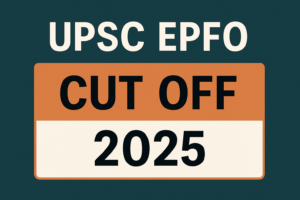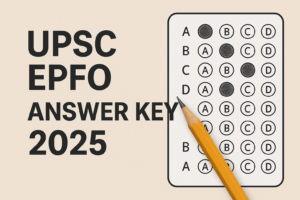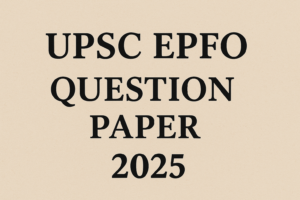Q19. “Energy security constitutes the dominant kingpin of India’s foreign policy, and is linked with India’s overarching influence in Middle Eastern countries.” How would you integrate energy security with India’s foreign policy trajectories in the coming years?
| Approach: Begin by highlighting India’s high import dependence on oil and gas and its deep ties with the Middle East for energy security. In the body, discuss how energy security acts as a core driver of foreign policy through hydrocarbon dependence, diaspora–remittance linkages, and geopolitical leverage in West Asia. Then, suggest ways to integrate energy security with foreign policy: diversification of partners, strategic investments in Gulf oilfields, maritime security of energy routes, renewable energy diplomacy (ISA, green hydrogen), balancing Iran–Saudi ties, leveraging diaspora soft power, and expanding strategic reserves with energy corridors (INSTC, Chabahar). Conclude by stressing that aligning energy diplomacy with climate commitments will safeguard growth while enhancing India’s role as a bridge between West Asia and the Indo-Pacific. |
Model Answer
With 85% of crude oil and 55% of natural gas requirements imported (PPAC, 2023), India’s foreign policy has long been intertwined with securing stable energy supplies. As India’s economy aspires to become a $5 trillion economy and net-zero by 2070, integrating energy security with foreign policy trajectories will determine its global influence, especially in the Middle East.
Energy Security as a Kingpin of India’s Foreign Policy
- Dependence on Middle-east Hydrocarbons: India relies heavily on Middle East suppliers like Saudi Arabia, Iraq, UAE, and Kuwait, which provide over 40% of its crude oil.
- To secure this flow, India signs long-term contracts (e.g., ADNOC-UAE deal), invests in refineries, and safeguards key routes like the Strait of Hormuz through naval presence.
- Diaspora & Remittances: Nearly 9 million Indians in the Gulf work largely in oil-driven economies like Saudi Arabia, UAE, and Kuwait, where energy exports fund jobs in construction, services, and shipping.
- The World Bank estimates that India received a record $111 billion in remittances in 2022, a portion of which (roughly 28%) comes from the Gulf Cooperation Council (GCC) countries.
- Geopolitical Leverage: Energy partnerships provide India with leverage in West Asia’s shifting politics, from balancing Iran-Saudi rivalry to strengthening ties with OPEC+ members.
Recommendations to integrate energy security with India’s foreign policy trajectories
-
- Diversification of Energy Partners: Foreign policy must build multi-vector energy relations to avoid overdependence.
- E.g., Russia (20% share in 2023, post-Ukraine war), US shale gas, and Africa (Mozambique LNG).
- Strategic Investments in Middle East:
- Government should encourage Indian PSUs (ONGC Videsh, IOCL, BPCL) to acquire stakes in upstream oil blocks in UAE, Saudi Arabia, and Qatar.
- Utilising the IMEC corridor, I2U2 for ensuring energy security.
- Bilateral ties with middle east countries: Saudi Arabia plans to invest in the Ratnagiri refinery in India which will be the largest investment by the country, furthering India’s energy security.
- Energy Transport and Maritime Security: Strengthen Indian Navy’s role in securing sea lanes of communication (SLOCs) in the Arabian Sea and Persian Gulf.
- Integrating Renewable Energy Diplomacy: India should position itself as a leader in the global energy transition by promoting the International Solar Alliance (ISA), where UAE and Saudi Arabia are active members.
- Expanding cooperation in green hydrogen projects with Oman and Saudi Arabia also aligns with India’s net-zero 2070 pledge (COP26) and builds future-oriented energy partnerships.
- Balancing Rivalries in West Asia: India must carefully balance ties between Iran and Saudi Arabia, using energy diplomacy to remain neutral while protecting its strategic interests.
- E.g., the Chabahar Port in Iran provides India access to Central Asia, while strong relations with Riyadh secure stable oil supplies.
- Diversification of Energy Partners: Foreign policy must build multi-vector energy relations to avoid overdependence.
- Leveraging Diaspora: India can use its strong Gulf diaspora as a diplomatic bridge to deepen energy partnerships and mutual trust.
-
- Soft Power: Expanding cultural and strategic cooperation through Comprehensive Strategic Partnerships (CSPs) with UAE, Saudi Arabia, and Qatar can help enhance India’s influence.
- Expand Strategic Reserves: India should expand its Strategic Petroleum Reserves (SPR) from the current 5.3 million tonnes (9.5 days cover) to the IEA-mandated 90 days for greater energy security.
- Energy Corridors: Promoting connectivity projects like the International North-South Transport Corridor (INSTC) and Chabahar Port will ensure secure energy flows from Eurasia and the Gulf.
- Creating a Buyer’s Market for extracting better deals with crude exporters: India can collaborate with Japan and China to extract better deals with crude exporters.
Steps beyond Crude Oil & collaboration on renewable energy:
As India and the world moves towards climate neutrality, there is a need for India to moving towards renewable energy for its energy security.
- Lead global platforms like ISA, CDRI, OSOWOG.
- Embed renewable cooperation in bilateral/multilateral deals.
- Secure rare earths & lithium through mineral diplomacy.
- Push for climate finance & tech transfer via UNFCCC, GCF.
- Promote South–South cooperation with concessional projects in Africa/Asia.
- Build regional green grids with SAARC, ASEAN, OSOWOG etc..
- Open overseas markets for Indian renewable firms through trade diplomacy.
- Use diaspora networks to attract investment in green bonds.
- Frame renewables as climate justice diplomacy in COP/G20.
- Align foreign policy with energy security + soft power.
India must balance hydrocarbon dependence with renewable leadership, diversify partners, and secure supply routes while aligning with its climate commitments. Integrating energy diplomacy into foreign policy not only safeguards economic growth but also enhances India’s stature as a responsible great power bridging West Asia and the Indo-Pacific.

 UPSC EPFO Cut Off 2025 (Expected): Categ...
UPSC EPFO Cut Off 2025 (Expected): Categ...
 UPSC EPFO Answer Key 2025 Out (Unofficia...
UPSC EPFO Answer Key 2025 Out (Unofficia...
 UPSC EPFO Question Paper 2025 PDF Downlo...
UPSC EPFO Question Paper 2025 PDF Downlo...

























